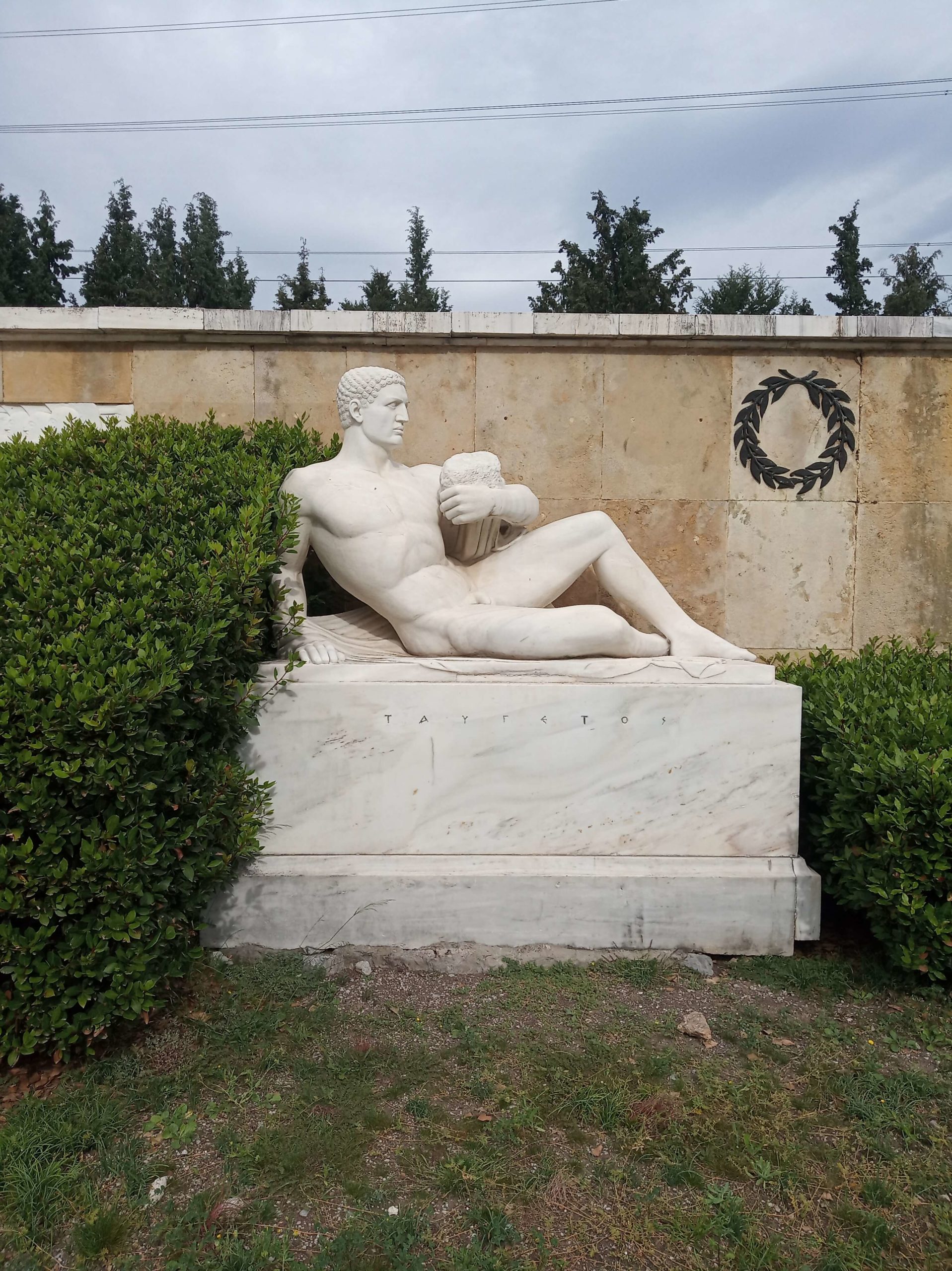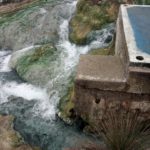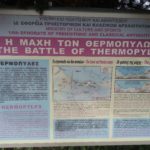Welcome to our article where we delve into the fascinating history surrounding the Thermopylae Memorial. This iconic memorial stands as a testament to the bravery and sacrifice of the Greek soldiers who faced off against the mighty Persian Army in the Battle of Thermopylae in 480 B.C. Join us on a journey through time as we explore the significance of this historic event and the enduring legacy it has left behind.
Key Takeaways:
- The Thermopylae Memorial honors the heroism and valor displayed by Greek soldiers in the Battle of Thermopylae.
- This historic battle, fought in 480 B.C., is renowned for its symbolization of sacrifice, bravery, and patriotism.
- Ancient Greek historians, such as Herodotus, have recorded the history of the Battle of Thermopylae.
- Recent archaeological discoveries, including Persian arrow points, have provided further evidence of this colossal struggle.
- Thermopylae’s strategic location played a vital role in the battle, providing the Greek soldiers with a territorial advantage against the Persian Army.
The Strategic Importance of Thermopylae
The Battle of Thermopylae was not only a legendary clash between the Greek and Persian armies, but it was also strategically significant in the context of the wider Greco-Persian wars. Located in southern Greece, Thermopylae was a narrow pass that provided a natural advantage to the Greeks.
The mountainous terrain of Greece forced the invading Persians to take a non-linear approach to their invasion, and Thermopylae became a crucial point along their route. This narrow pass restricted the movement of the Persian army, preventing them from bringing their full forces to bear on the Greeks. The Greeks, on the other hand, were able to capitalize on this bottleneck, utilizing their superior knowledge of the terrain to their advantage.
In addition to the natural advantage of the narrow pass, the Greeks also benefited from existing fortifications built by the Phocians. These fortifications added an extra layer of defense, making it even more challenging for the Persians to penetrate the Greek lines. The combination of the strategic advantage of the pass and the fortified defenses allowed the Greek soldiers, led by the valiant Spartan king Leonidas, to make a stand against the overwhelming Persian forces.
Table: Comparison of Forces at Thermopylae
| Greeks | Persians | |
|---|---|---|
| Numbers | Approximately 7,000 | Estimated at least 100,000 |
| Armor | Heavy bronze armor | Lighter armor |
| Weapons | Long spears, bronze shields | Bows, short spears, swords |
| Terrain | Mountainous terrain, narrow pass | Open plains |
As the table above illustrates, the Greeks were vastly outnumbered by the Persians, but their superior armor, weapons, and knowledge of the terrain gave them a significant advantage. The narrow pass of Thermopylae played a crucial role in allowing the Greeks to hold their ground against the larger Persian army.
In the next section, we will delve into the heroic resistance displayed by the Greek soldiers at Thermopylae and the lasting legacy of their sacrifice.
The Battle and Its Heroes
The Battle of Thermopylae was a testament to the bravery and heroism of the Spartan soldiers, as well as the solidarity of the Greek alliance. As the Persian army launched wave after wave of attacks, the Greeks fought valiantly in their phalanx formation, utilizing their superior armor and long spears to hold the line. Their determination and resilience in the face of overwhelming odds is truly awe-inspiring.
On the third day of the battle, a local shepherd betrayed the Greeks, leading the Persians to a path that bypassed their defenses. Despite this betrayal, Spartan king Leonidas, along with a small contingent of Spartan soldiers and their allies from other Greek city-states, decided to make their stand at the narrowest point of the pass. Displaying unwavering bravery, the Spartans and their comrades fought fiercely, even resorting to using their swords, hands, and teeth to defend themselves.
“Go, stranger, and tell the Spartans that we lie here obedient to their laws.” – Epitaph of Simonides
Their heroic resistance left an indelible mark on history, symbolizing the virtues of freedom and courage. Their sacrifice became a rallying cry for future generations and a testament to the power of unity in the face of adversity.
The Spartans: Warriors Like No Other
The Spartan soldiers played a pivotal role in the Battle of Thermopylae. Known for their disciplined and rigorous training, they were unparalleled in their combat skills and unwavering loyalty. Trained from a young age to be warriors, the Spartans were renowned for their unyielding spirit and the relentless pursuit of victory on the battlefield.
The Battle of Thermopylae showcased the strength and prowess of the Spartan soldiers, as they fearlessly faced the Persian army head-on. Their unwavering determination to defend their homeland and protect their fellow Greeks set them apart as true heroes. Their sacrifice and bravery continue to inspire awe and admiration to this day.
| Greek City-States | Allies |
|---|---|
| Sparta | Arcadia |
| Athens | Corinth |
| Thespiae | Thebes |
The Greek alliance, composed of various city-states including Sparta, Athens, and Thespiae, united under a common cause to defend their freedom and way of life. This alliance demonstrated the power of unity and cooperation in the face of a common enemy. The heroism of the Spartan soldiers, combined with the unwavering support of their Greek allies, created a force that fought not only for themselves but for the ideals of their entire nation.
In conclusion, the Battle of Thermopylae stands as a testament to the bravery and heroism of the Spartan soldiers and the strength of the Greek alliance. Their resistance against overwhelming odds serves as an inspiration for generations to come, reminding us of the enduring power of courage, sacrifice, and unity in the face of adversity.
The Legacy of Thermopylae
While the Battle of Thermopylae ended in a defeat for the Greeks, its impact resonated far beyond the battlefield. The battle served as a rallying cry for the Greek city-states, igniting a sense of unity and determination against the Persian invasion. This newfound unity led to subsequent victories, such as the remarkable Greek naval triumph at the Battle of Salamis.
The story of Thermopylae has transcended time and has been immortalized in various art forms, literature, and film. It has become a cultural symbol of heroic resistance against overwhelming odds, capturing the imagination of people around the world. One of the most notable depictions of the battle is the movie “300,” which brought the epic struggle to life on the silver screen.
The memorial at Thermopylae stands as a testament to the bravery and sacrifice of the Greek soldiers who fought in the battle. It serves as a reminder of their enduring legacy in the annals of history, inspiring future generations to stand up for freedom and courage in the face of adversity. The cultural significance of the Battle of Thermopylae ensures that its legend will continue to captivate and inspire for centuries to come.
FAQ
What is the Battle of Thermopylae?
The Battle of Thermopylae was a historic battle fought in 480 B.C. between the Greek soldiers and the Persian Army. It is known for its three-day epic struggle and is considered a symbol of sacrifice, bravery, and patriotism.
Who recorded the history of the Battle of Thermopylae?
The history of the Battle of Thermopylae was recorded by ancient Greek historians, including Herodotus. Their writings provide valuable insights into the events that took place during the battle.
What evidence of the Battle of Thermopylae has been found?
Recent archaeological work has provided evidence of the Battle of Thermopylae, such as the discovery of Persian arrow points. These findings support the historical accounts and help to further understand the battle.
Where is Thermopylae located?
Thermopylae is located in southern Greece. It is a narrow pass that played a strategic role during the Battle of Thermopylae.
Why was Thermopylae strategically important during the battle?
The mountainous terrain of Greece forced the invading Persians to take a non-linear approach to their invasion, and the pass at Thermopylae was a natural choice for their route. The narrowness of the pass prevented the Persian army from fully utilizing its forces, giving the outnumbered Greek soldiers a territorial advantage. Existing fortifications built by the Phocians also added another layer of defense.
How did the Greeks fight during the Battle of Thermopylae?
The Greek soldiers fought in phalanx formation, utilizing their superior armor and long spears to their advantage. They repelled waves of Persian attacks, including those from the elite Immortals.
What happened during the final stage of the Battle of Thermopylae?
Despite a betrayal by a local shepherd who showed the Persians a path to bypass their defenses, Spartan king Leonidas and a small contingent of Spartan soldiers, along with allies from other Greek city-states, chose to stay and make their last stand at the narrowest point of the pass. They fought valiantly, using swords, hands, and teeth to defend themselves.
What was the outcome of the Battle of Thermopylae?
The Greeks were ultimately defeated in the Battle of Thermopylae. However, their bravery and sacrifice inspired the Greek city-states to unite against the Persian invasion, leading to subsequent victories in the Greco-Persian wars.
What is the legacy of the Battle of Thermopylae?
The Battle of Thermopylae has become a cultural symbol of heroic resistance against overwhelming odds. It has been immortalized in literature, art, and film, such as the movie “300.” The memorial at Thermopylae serves as a reminder of the bravery and sacrifice of the Greek soldiers and their enduring legacy in history.
Source Links
- https://www.discovermagazine.com/planet-earth/the-epic-battle-of-thermopylae-remains-one-of-the-most-stirring-defeats-of
- https://www.britannica.com/event/Battle-of-Thermopylae-Greek-history-480-BC
- https://www.thecollector.com/battle-of-thermopylae/
Author Profile
-
Welcome to e-thermopyles.gr, your gateway to the fascinating world of Thermopylae and the legendary Spartans. My name is George Margaritis, and I’m the proud owner and writer behind this website.
A Passion for History and the Spartan Legacy
I consider myself fortunate to call the historic site of Thermopylae my home. From a young age, I was captivated by history, and in particular, the incredible tale of the Battle of Leonidas in Thermopylae. The valiant stand of King Leonidas and his 300 Spartans against overwhelming odds has left an indelible mark on the annals of history.
As I delved deeper into this captivating story, my fascination only grew. The bravery, strategy, and sacrifice of those Spartan warriors resonated with me, and I wanted to share this rich history with the world. That’s why I created e-thermopyles.gr, a platform dedicated to exploring and uncovering the depths of knowledge surrounding Thermopylae and the Spartans.
Latest entries
 HistoryOctober 31, 2023Exploring Why is the Battle of Thermopylae Interesting
HistoryOctober 31, 2023Exploring Why is the Battle of Thermopylae Interesting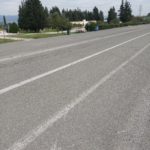 GuidesOctober 31, 2023Your Guide to the Athens to Thermopylae Train Journey
GuidesOctober 31, 2023Your Guide to the Athens to Thermopylae Train Journey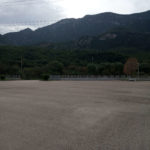 GuidesOctober 31, 2023Uncover the Mystery: Where is Thermopylae Today?
GuidesOctober 31, 2023Uncover the Mystery: Where is Thermopylae Today? GuidesOctober 31, 2023Uncover History by Visiting Thermopylae – A Travel Guide
GuidesOctober 31, 2023Uncover History by Visiting Thermopylae – A Travel Guide
